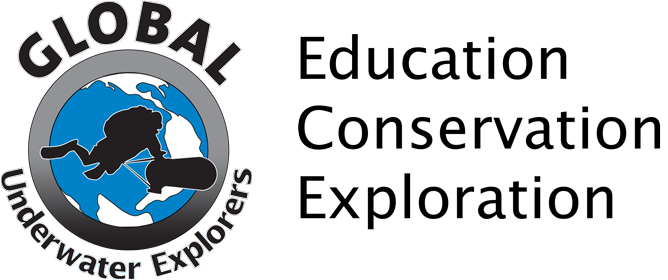Class report: Rec 3 in Croatia
Class report: Rec 3 in Croatia
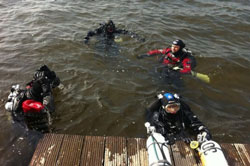 Preparation for the course for us consisted of regular diving as a team, mainly to brush up fundamentals skills so everything goes 'smooth.' Also of course, to get used to our new gear: argon sets, stages, torches.
Day one of the course is conducted in Vinkeveen, still in The Netherlands. It's a repetition of Fundamentals theory, instruction on new skills, and two dives to show what we are (still) capable of.
Preparation for the course for us consisted of regular diving as a team, mainly to brush up fundamentals skills so everything goes 'smooth.' Also of course, to get used to our new gear: argon sets, stages, torches.
Day one of the course is conducted in Vinkeveen, still in The Netherlands. It's a repetition of Fundamentals theory, instruction on new skills, and two dives to show what we are (still) capable of.Oops, it appears the skills are not as smooth as we had hoped them to be...
"Ah, already here"
Before commencing the trip we are advised by some of the more experienced Croatia-travellers; “make sure you arrive ahead of time, preferably a day in advance, as this gives you a chance to make a relaxed dive before the course starts, and to get used to the environment and the water.” Good advice! We leave at 5:30am and 1400 kilometres later we arrive in Krnica, ready for our relaxed first day tomorrow.
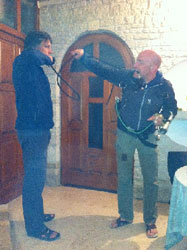 JP is already waiting for us. He and Anne-Marie had already done two dives on the Vis that day. "Ah, already here. Great, we can start tomorrow!" With the prospect of finishing a day earlier than planned, which also means an extra day of 'free' diving, we are easily convinced. We do get to rest a bit the next morning, and as a bonus, JP gives a RB80 rebreather overview while cleaning it after a dive. After this, the real labour commences.
Similar to what we are used to from Fundamentals, it's hard work. After the first afternoon the days make an early start at 8am. First was some theory, then some diving, then more theory. There was not a single day we finished before 8pm.
Theory sessions are more extensive than with Fundamentals training, and give more insight on dive planning, gas management, breathing gas characteristics and decompression. There was a lot of repetition and a lot of new theory. We pay special attention to the part on decompression, as we will actually be making decompression dives! And there's always the homework; write out the procedures: s-drill, gas switch, and also do some dry-runs of the procedures. Everything to make sure things will go smoother during the dives to come.
"You learn most from your mistakes"
JP is already waiting for us. He and Anne-Marie had already done two dives on the Vis that day. "Ah, already here. Great, we can start tomorrow!" With the prospect of finishing a day earlier than planned, which also means an extra day of 'free' diving, we are easily convinced. We do get to rest a bit the next morning, and as a bonus, JP gives a RB80 rebreather overview while cleaning it after a dive. After this, the real labour commences.
Similar to what we are used to from Fundamentals, it's hard work. After the first afternoon the days make an early start at 8am. First was some theory, then some diving, then more theory. There was not a single day we finished before 8pm.
Theory sessions are more extensive than with Fundamentals training, and give more insight on dive planning, gas management, breathing gas characteristics and decompression. There was a lot of repetition and a lot of new theory. We pay special attention to the part on decompression, as we will actually be making decompression dives! And there's always the homework; write out the procedures: s-drill, gas switch, and also do some dry-runs of the procedures. Everything to make sure things will go smoother during the dives to come.
"You learn most from your mistakes"The first two dives are similar to those we did in Vinkeveen. Every drill comes along: basic 5, s-drill, valve drill, SMB deployment, and ascent. During the other skills-dives everything reappears regularly, but in different contexts. New skills are added such as gas-switch and valve failures. Skills are combined and ascents get more complicated. And more so than in the fundamentals course, the interrelation between skills is demonstrated. Why do you need to master the valve drill? Learn and practice the failures and you'll know. Why do the deco stops need to be spot-on? Well, you're doing decompression dives with mandatory stops, so the significance is obvious. Some skills go well, but a lot of them don't; it's all part of the learning process. Moments of great frustration come in large doses, but JP recognises our progress and shares that with us. Mostly, we feel the progress is miles away, especially when we are fiddling with a non-stowed light cord trapped between our valves, again. But we do have lots of fun though and notice some improvement. The GUE-EDGE is stutter-free, skills we had trouble with earlier go more and more on auto-pilot. It appears things are actually going smoother! Frank almost loses his regulator underwater while laughing when he witnesses one of the teammates makes a belly-landing in the sand as JP gives him a taste of how it is to swim with three stages instead of just one. Of course, he does exactly the same... The pleasure is much enhanced because not all the dives are about working on skills. Halfway through the course there is an experience dive on the Lina wreck. The wreck is in good condition, except for the wooden decks which are gone, but consequently give a beautiful view into the holds. After about twenty minutes bottom time there are the deco stops and the gas-switch, all according to plan. And, this was our first trimix dive. The three of us surface satisfied; this is what all of this effort is for! After every dive there is an extensive debriefing with points of attention for the next dive. Ruthless video footage, shot by Anne-Marie, registers every detail. Confronting, but ever-the-more educational, JP emphasizes: "you learn most from your mistakes." During this week we have definitely learned a lot...
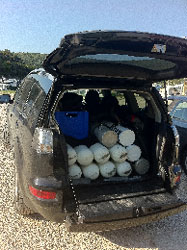 The one skill we quickly and most noticeably master is the efficient loading of the car. You need a whole bunch of stuff for each diving day! Maurizio's diving centre, however, has an ample supply of 12-Liter doubletanks, stage bottles, and all the gas mixes you'll need. In the evening you give him the heads-up on what you need for the next day, and he'll make sure it's waiting for you in the morning.
The one skill we quickly and most noticeably master is the efficient loading of the car. You need a whole bunch of stuff for each diving day! Maurizio's diving centre, however, has an ample supply of 12-Liter doubletanks, stage bottles, and all the gas mixes you'll need. In the evening you give him the heads-up on what you need for the next day, and he'll make sure it's waiting for you in the morning.
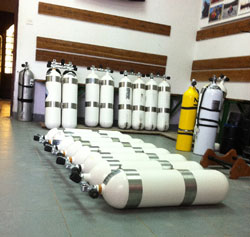 Don't bother looking for your own set. Chances are someone else has already taken it. You can take whatever is on hand; it's all the same anyway— that is the benefit of standardization. At the end of the week, you'll have your own stuff back.
The last few dives of the course are two more experience dives on the fantastic wreck of the Baron Gautsch. As a team we do the preparation and planning of the dive to a depth of 36 meters. The dive is amazing, and makes us wish we had dive sites like these at home. We swim alongside and around the superstructure, and after that we enter the upper deck. Visibility inside is perfect! JP always wants to have a goal for the dive and asks if it would be okay if he did a photo shoot with us during the dive. Would it be okay? Of course! Two great dives and great pictures of them as a memory, what more can you want? It is also is the perfect opportunity to bring an important part of the theory into practice: "rule #2: always look good." The dives go according to plan and JP is satisfied with the pictures he has taken. It all feels good!
Don't bother looking for your own set. Chances are someone else has already taken it. You can take whatever is on hand; it's all the same anyway— that is the benefit of standardization. At the end of the week, you'll have your own stuff back.
The last few dives of the course are two more experience dives on the fantastic wreck of the Baron Gautsch. As a team we do the preparation and planning of the dive to a depth of 36 meters. The dive is amazing, and makes us wish we had dive sites like these at home. We swim alongside and around the superstructure, and after that we enter the upper deck. Visibility inside is perfect! JP always wants to have a goal for the dive and asks if it would be okay if he did a photo shoot with us during the dive. Would it be okay? Of course! Two great dives and great pictures of them as a memory, what more can you want? It is also is the perfect opportunity to bring an important part of the theory into practice: "rule #2: always look good." The dives go according to plan and JP is satisfied with the pictures he has taken. It all feels good!
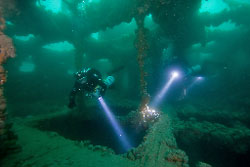 “Congratulations …”
“Congratulations …”Between the dives, theory sessions, and homework the atmosphere is relaxed, and it almost feels like a real holiday. The apartments in Krnica are beautiful, and food in the local pizzeria and in the restaurant next to the diving centre is fine. Besides us there is a group of other Dutch GUE divers present. We regularly eat together and it is nice to share diving stories and experiences on the boat. In the final evaluation, JP concludes we adequately mastered the required skills and we are able to perform this kind of diving as a team. That's good news! We all score 95% on the theoretical exam. We have all three passed the course, and besides that, JP rates our skills high enough to upgrade our Fundamentals pass to a Tech rating. So, that's a 200% result! One of the other divers immediately comes to us: "congratulations on passing the exam for your new, very expensive hobby." During the last days in Croatia we make our final dives as an autonomous team, amongst others on the wreck of the Hans Schmidt and Giuseppe Dezza. Two days in a row Maurizio invites us for a barbeque; the first day at the diving centre, the next at his home. The quantity of meat is unimaginable, but proportional to his hospitality. We eat until full and completely satisfied, and we commence the trip home the next day at 06:30. It was a great week, in a place we are certain to visit again in the future!
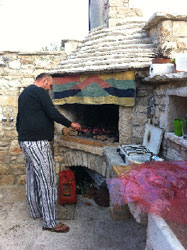
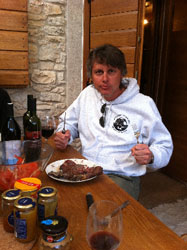
We thank JP and Anne-Marie for the education and Patrick, Aldo, Rob and Marlon for the pleasant company. -Frank Thorborg
